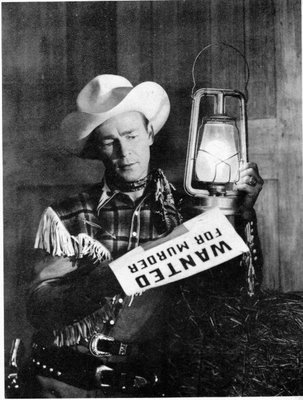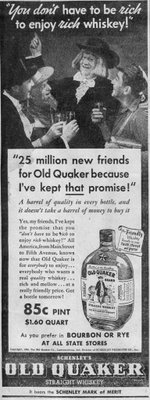Saturday, September 30, 2006
Friday, September 29, 2006
Thursday, September 28, 2006
Wednesday, September 27, 2006
Tuesday, September 26, 2006
Monday, September 25, 2006
Sunday, September 24, 2006
Saturday, September 23, 2006
Friday, September 22, 2006
Charlie Pride - Hee-Haw Clip singing "Kaw-Liga" (1968)
The following is from Charlie Pride's offical website:
Born to poor sharecroppers, one of eleven children in Sledge, Mississippi, Pride is a timeless everyman, revered by his musical peers and adored by countless millions of fans around the globe. His golden baritone voice has transcended race and spanned the generations.
Charley Pride unofficially started his music career in the late 1950s as a ballplayer with the Negro American League’s Memphis Red Sox singing and playing guitar on the team bus between ballparks. Self-taught on a guitar bought at the age 14 from Sears Roebuck, Pride would join various bands' onstage as he and the team roved the country.

After a tryout with the New York Mets, Pride decided to return to his Montana home via Nashville. It was there he met Jack Johnson, who upon hearing the singer perform, sent him on his way with the promise of a management contract and a newly forged relationship that would last for over a decade.
A year later, Pride returned to the Music City and was introduced to producer, Jack Clement, who gave him several songs to learn. When Clement heard Pride’s renditions, he immediately asked the fledgling singer if he could cut two songs in two hours. Pride agreed, and “The Snakes Crawl at Night” and “Atlantic Coastal Line” were recorded.
Three months later, Pride’s two song demo landed in the hands of already legendary RCA Records head, Chet Atkins, who was so moved he immediately signed him to the label. Pride’s first single hit the airwaves in January 1966 and just like that his star was on the rise. Within a short period of time “The Snakes Crawl at Night” was climbing the charts with his “Before I Met You” closing in on its tail.

Between 1969, when he first hit #1 on the singles chart with "All I Have to Offer You (Is Me)" and 1984, when he commanded the top spot again with "Every Heart Should Have One," Pride scored more than 36 number one country singles.
Over the past thirty years, Pride has remained one of the Top 20 best-selling country artists of all-time. His incredible legacy includes 36 #1 hit singles, over 70 million albums sold, 31 gold and 4 platinum albums - including one quadruple platinum. On RCA Records, Charley Pride is second in sales only to Elvis Presley.
Thursday, September 21, 2006
Wednesday, September 20, 2006
Tuesday, September 19, 2006
Monday, September 18, 2006
Sunday, September 17, 2006
Saturday, September 16, 2006
Friday, September 15, 2006
Thursday, September 14, 2006
Wednesday, September 13, 2006
Tuesday, September 12, 2006
Monday, September 11, 2006
Sunday, September 10, 2006
Saturday, September 09, 2006
Friday, September 08, 2006
Thursday, September 07, 2006
Tuesday, September 05, 2006
"From Dusk Till Dawn 3: The Hangman's Daughter" (2000)

From Richard Scheib's The Science Fiction, Horror and Fantasy Film Review:

This was the third of the films that began with the cinematically-released Quentin Tarantino-Robert Rodriguez collaboration From Dusk Till Dawn (1996). The success of From Dusk was followed by two South African-shot released-to-video sequels, From Dusk Till Dawn 2: Texas Blood Money (1999) and this. The first two films disappointed - From Dusk felt like two quite different films stuck together, while Texas Blood Money conducted a more interesting variation on the central premise but was killed off by Scott Spiegel's pretentious direction. The surprise is that The Hangman's Daughter is actually the best of all three films.

All three films retain the same basic idea - a group of outlaws on the run who end up at The Titty Twister and are forced to survive up against vampires. The Hangman's Daughter's novelty is to take the story back and set it a century before the other two films as a Western. There is considerable ingenuity to this. One particularly clever touch is its winding in of actual history, adding as a major character Ambrose Bierce, the real-life writer best known for his biting cynicism.
 Bierce wrote collections such as Tales of Soldiers and Civilians (1891) and The Devil's Dictionary (1903) and a good number of horror stories, most famously the original deathdream fantasy An Occurrence at Owl Creek Bridge (1891). It is a touch that cleverly resolves Bierce's mysteriously unexplained real-life disappearance South of the Border in 1914. [The subtitle of the film incidentally is borrowed from the title of one of Bierce's books, The Monk and the Hangman's Daughter (1892)].
Bierce wrote collections such as Tales of Soldiers and Civilians (1891) and The Devil's Dictionary (1903) and a good number of horror stories, most famously the original deathdream fantasy An Occurrence at Owl Creek Bridge (1891). It is a touch that cleverly resolves Bierce's mysteriously unexplained real-life disappearance South of the Border in 1914. [The subtitle of the film incidentally is borrowed from the title of one of Bierce's books, The Monk and the Hangman's Daughter (1892)].
Monday, September 04, 2006
Sunday, September 03, 2006
Saturday, September 02, 2006
Friday, September 01, 2006
Meramec Caverns - Stanton, Missouri

The Following is from the Roadside America Site:
Meramec Caverns - Stanton, Missouri This is one of the giants among Missouri's show caves. You don't even reach the mouth until you drive past the Meramec Caverns motel and RV park, park half a mile away, and claw your way through the ice cream stand, game arcade and huge gift shop. Boys of all nations gather at the toy gun rack, firing off shots in all directions. The whole complex is packed with vacationers desperate for an excuse to get out of the heat. Meramec satisfies in this regard, providing guests with an 80-minute journey through its clammy passages. Flag CurtainThe cavern bills itself as "Jesse James's Hideout," but the tiny cabin in the cave mouth (under the neon "Meramec Caverns" sign) belonged to a moonshiner, not Jesse.

Just beyond lies the Grand Ballroom, with a mirrored disco ball hanging over its tiled floor and signs along its lumpy walls boasting of TV shows and movies that were filmed here, like "Lassie." Dim, drippy, lesser passages extend beyond here, packed solid with tour after tour of lock-stepped heat-beaters. The booming voices of well-rehearsed tour guides lecture adjacent groups about cave nodules and Art Linkletter (another TV show filmed here), blend into an eerie audio mosaic. All of this leads to the last room, where a theater of tiered plastic chairs spreads out from a great curtain wall of striking flowstone formations. The better for visitors to appreciate nature's handiwork? Hah! How long do you think Meramec Caverns would've stayed in business if that's all that were here? Meramec's founders foresightedly created in this room "the greatest show under the earth" -- a triumph of 1946 technology.

As the tour guide manually throws noisy toggles that turn colored lights on and off, a well-worn recording of Kate Smith singing "God Bless America" echoes off the surrounding stone. The clacking switches add staccato overtones to the murky music, as the show climaxes in a slide of a waving American flag projected in the middle of the flashing blues and reds and greens. The tour group, happy after finally being allowed to sit, bursts into applause.







































